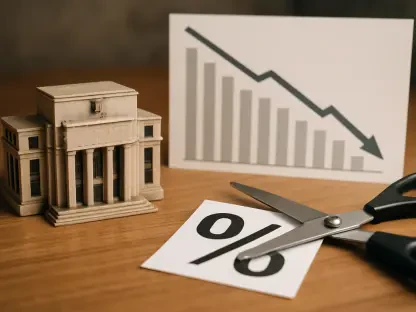Amidst a rapidly changing financial landscape, the buy now, pay later (BNPL) model is reshaping both consumer behavior and industry dynamics. This method allows consumers to make purchases and defer payments over a specified period without incurring interest, thus driving significant shifts in how people manage their spending. Its increasing relevance, fueled by technological advancements and consumer demand for flexibility, positions BNPL as a compelling area of interest in financial technology (fintech). This article aims to explore the current market dynamics, enriched by industry insights and direct predictions on BNPL’s future directions.
Current Market Dynamics
Growth Trends and Adoption Rates
Recent data reveal an exponential rise in BNPL usage, marking its transformation into a ubiquitous financial solution globally. The past few years have seen transaction volumes soar, with fintech companies reporting millions of new users. Industry reports corroborate this growth, showcasing unprecedented adoption rates. This popularity can be attributed largely to millennials and Gen Z, who opt for alternative credit services over traditional credit cards.
Real-world Applications and Leading Entities
Pioneers like Klarna, renowned for their sophisticated BNPL offerings, illustrate the concept’s successful market integration. This fintech giant has broadened its portfolio with innovations such as the Klarna Card, introducing a seamless blend of traditional banking and modern financial solutions. In doing so, Klarna has positioned itself to rival established financial institutions by aligning its services with evolving consumer demands. Meanwhile, prominent retailers and banks have embraced BNPL models, embedding them deeply into their purchasing processes to capture consumers’ growing preference for flexible payment options.
Industry Insights and Expert Opinions
Experts in the fintech sector perceive BNPL as a pivotal shift in financial services, providing insights into its appeal and challenges. While offering enticing financial flexibility, the BNPL model faces scrutiny over concerns about increasing consumer debt and the potential for regulatory intervention. Financial analysts warn that the ease of deferred payments may lead to financial irresponsibility among users, posing risks to both individuals and the broader economic ecosystem. However, industry leaders argue that BNPL services are revolutionizing financial products by offering more tailored, consumer-centric solutions.
Future Directions and Implications
Looking ahead, BNPL is poised to extend its reach across new markets and sectors, leveraging its capacity to enhance consumer spending flexibility while fostering economic inclusion. Yet, this expansion is not without risk, as rising consumer debt presents a challenge that must be addressed proactively. Regulatory bodies are anticipated to intensify their focus on the sector to mitigate potential downsides, ensuring consumer protection while fostering innovation. Meanwhile, advancements in technology present opportunities for further evolution, potentially integrating AI and blockchain to enhance transparency and efficiency.
Conclusion
In a world where financial empowerment through flexibility is becoming increasingly valued, the expansion of BNPL services highlights a significant trend of our time. The past years have seen these models redefine financial engagement, demonstrating both their potential and the challenges they pose. As consumers and businesses continue to explore BNPL options, staying informed about developments and potential impacts is crucial. Future considerations may involve addressing underlying societal impacts and ensuring regulatory measures align with this evolving financial paradigm.









